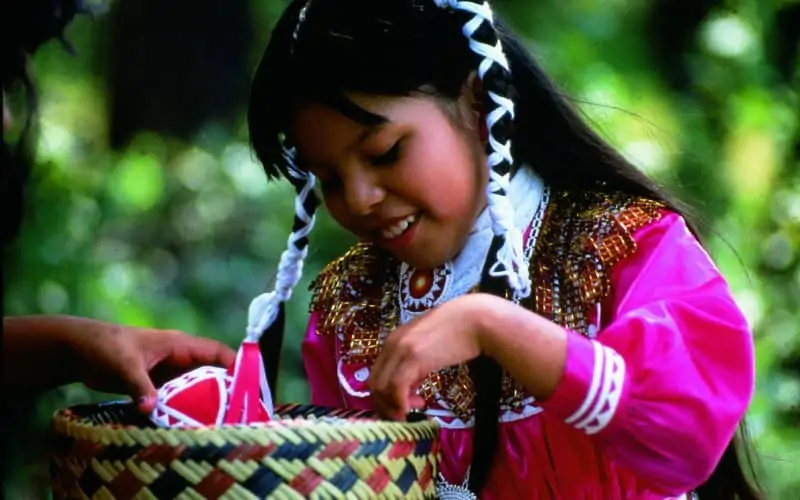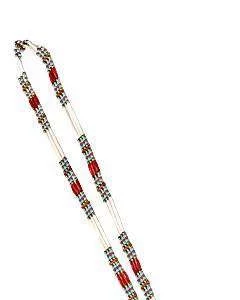Across the United States, hundreds of Native American tribes continue their traditional lifeways to sustain their inherent sovereignty.
Today's Native American tribes descend from the original inhabitants of North America who have been making history for more than 20,000 years.
In early American history, tribes were forcibly removed from their lands and onto reservations so the U.S. Indian Agents could control and eventually exterminate them. From there, treaties formed, but not with honest intentions. In the last 180 years, most federally recognized tribes have survived on reservations. Some tribes escaped removal and distanced themselves from encroaching foreigners and their beliefs.
Native American tribes in the U.S. still acknowledge their sacred sites, such as the Blackhills, the Puebloan Ruins, Yellowstone National Park, Moundville, and Poverty Point World Heritage site, which some originally called home. In treaties, some sacred sites are under the trust of the U.S. government. Other sacred sites have faced destruction due to prejudices against Native Americans and ongoing colonization and industrialization.
Native American tribes' ability to preserve history, land, water, language, ceremony, culture, food, and music has allowed them to embrace and maintain their sovereignty. Today, tribes are categorized as federally recognized, state-recognized, or unrecognized. Native Americans are citizens of their state, country, and tribe.
Native American Tribes of North America | How many are there today in the U.S.?
How many federally recognized tribes are there? There are 574 federally recognized Native American tribes in the U.S., including 229 in Alaska. These “nations within a nation” are the only tribes that have a formal nation-to-nation relationship with the U.S. and its federal agency, the Bureau of Indian Affairs (BIA).
What does it mean to be a federally recognized Native American tribe?
Federal recognition offers tribes opportunities for self-government, self-determination assistance, and Federal-Tribal trust.
It is the U.S. government's moral responsibility for strengthening the federally recognized tribe's sovereignty under the BIA mission. Health services are available to federally recognized tribes through the Department of Health & Services, U.S. Indian Health Service. Federally recognized tribes are eligible to obtain personal, business, and college loans that are unavailable to other tribes and U.S. citizens. Federally recognized tribes may be eligible for hunting, fishing, eagle feather use, and burial ground privileges based on their treaty rights. Federal recognition can also lead to tribes opening casinos through a separate approval process.
Tribes that are not formally acknowledged by the BIA face a lack of complete self-governance, assistance, finances, fishing and hunting rights, land rights, health services, and are at risk of government mistreatment of their sovereignty.
How hard is it to become a federally recognized Native American tribe?
The federal acknowledgment process can take decades and millions of dollars for state tribes that have little finances. Tribes must compile historical, anthropological, and genealogical information which can be costly and timely. From there, the tribe must meet all of the requirements of the BIA, including proof of descending from a historic tribe.
However, the easiest and least expensive way to obtain federal recognition is for tribes to enter a process of Congressional legislation.
According to the BIA, since 2010, 10 Native American tribes have gained federal recognition. The most recent tribe to gain this status was the Little Shell Tribe of Chippewa.
What are the largest Native American tribes?
Cherokee, Navajo, and Choctaw are the largest Native American tribes in the U.S., according to Census.gov. All three tribes have ties to their historical territories since pre-European contact: the Navajo (the Four Corners), the Mississippi Band of Choctaw Indians (Mississippi), and the Eastern Band of Cherokee (North Carolina).
What about state-recognized Native tribes?
How many state-recognized tribes are there? There are 63 state-recognized Native American tribes in 13 states and 10 of these tribes have state-recognized reservations.
However, state-recognized tribes are treated as “second class citizens” in Indian Country. They suffer from suppression by local authorities and communities that never accept tribes' origins.
The countless unrecognized Native American tribes living among us likewise live with “second-class status” in Indian Country and remain vulnerable to local authorities.
Last Updated on October 19, 2022 by Jared McKiernan




Susan Jeppsson
says:Great article on the difference between federal and state recognized tribes.
As a headright owner of Wah-Zha-Zhe, I can’t help but feel like the necessity of being “recognized” by the very government who oppresses/oppressed us in so many ways appalling.
Paul Goodnough
says:according to my ancestry.com research, both my great grandmother Ginny Thompson ( no birth certificate available) and my grand mother Mabel Bollinger were born in the Oklahoma Indian Territory. The 1900 census had Ginny ( Virginia) and her parents as all being “indian” . Family tradition held that she was found by the Thompsons on the trail as the family came to the territory and they adopted her. also family tradition is that she was from the Kiowa-Apache tribe. No Listing in the Dawes Rolls or Ft. Sill registry.
chrissy powell
says:i want to know to get tested properly to see what tribe i am from.
Paul G
says:Thanks for writing!
I have several resources on PowWows.com to help you trace your family history.
First, start by reading our information here
https://www.powwows.com/am-i-native-american-how-to-find-my-indian-ancestors/
This page will give you links to more of the content about family history.
Also, I have a free email course about using Ancestry.com to find your Native American family history. The emails take you through Ancestry.com system step by step. And you can do it using their free 14-day trial!
https://www.powwows.com/learn-how-to-find-your-family-history/
Be sure to join our Facebook group to talk with other people search for their family history.
https://www.facebook.com/groups/nativeamericanfamilyhistory
Let me know if you have more questions!
Good luck with your search.
Thanks,
Paul G
PowWows.com
Running Doe
says:osiyo. I have watched this over and over really enjoy this so much, wonderful wado tsalagi
mary vera
says:why are the Comanche hardly ever mention in any native American subjects .Where they came from ,where they live and how many are left.
Beverly
says:Greetings, why are the Chiricahua Apache not federal recognized. This does Not make any sense. Hope to hear something soon
Vicky
says:My grandfather was a Chiricahua Apache and you never hear anything about them.
Shelley
says:We need to advocate Native American civil rights, human dignity, and cultural ways
Linda Bomes
says:It’s a shame that State Recognized Tribes are treated like this, they too have to prove their dependency of native lineage through genealogy, many cannot enroll federally due to how a tribe has established enrollment guidelines, like the Cherokee in Oklahoma where you have to be a direct lineal descent of one listed on the Dawes roll and who had to be living in Oklahoma at the time, they don’t include Aunts, Uncles, cousins, etc. even tho they are blood family.